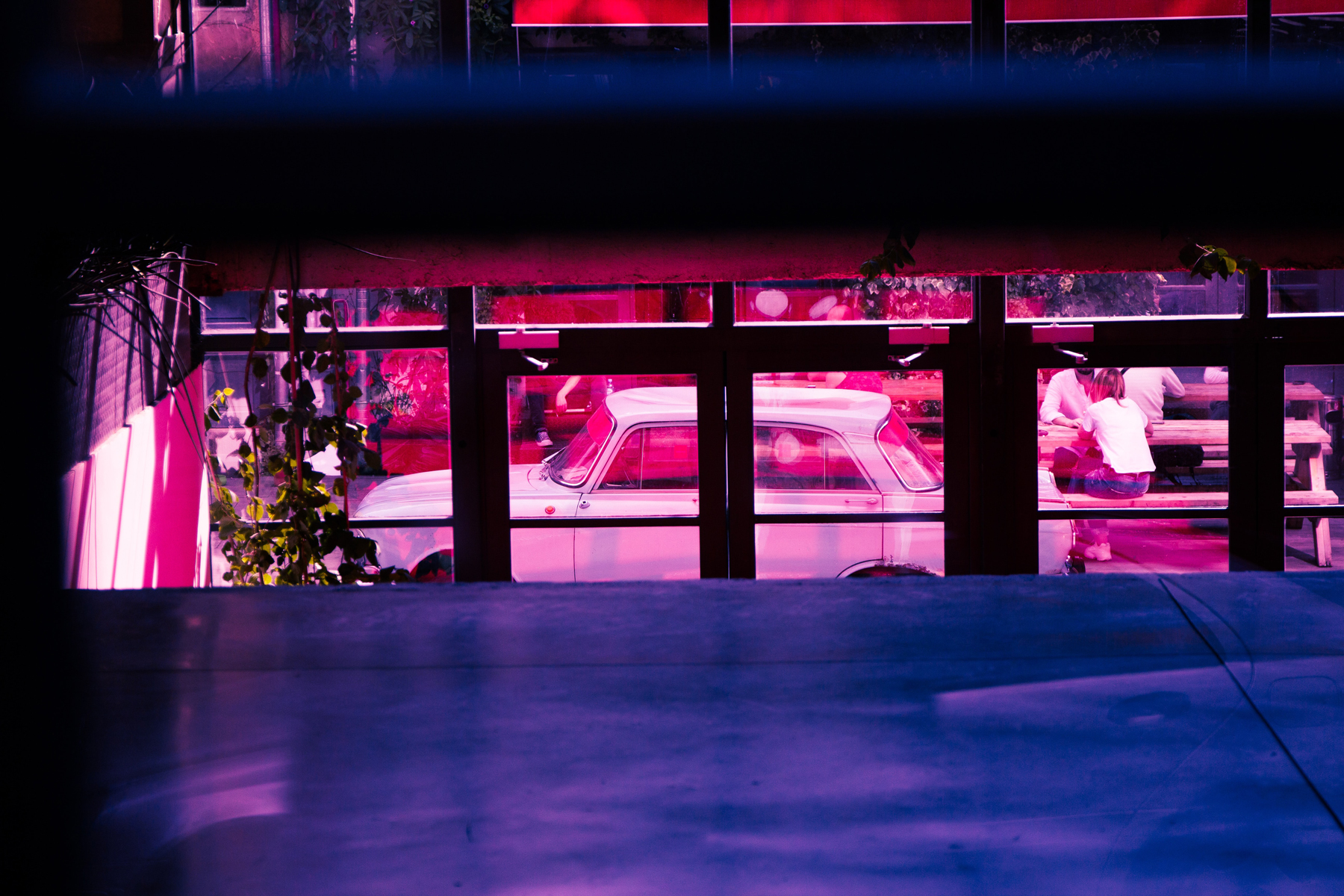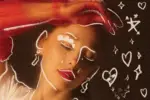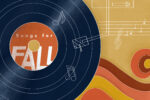Vaporwave is the music genre that shouldn’t exist. It doesn’t show up on radios. It doesn’t sell merchandise. Vaporwave is more at home in 24/7 YouTube channel playlists and sketchy Bandcamp clones than it is at a crowded venue.
In fact, few people outside of the ever-accelerating meme culture of online media can even attach a word to it. It is, by the admission of its own diehard fans, dead like disco. However, none of this matters. The modern pop scene is possessed by vaporwave’s digital ghost, and it doesn’t look like it will be passing on anytime soon.
Paradoxically, for an intentionally eclectic genre, the history of vaporwave is fairly well documented by the community. There are few dissenting opinions or alternative histories. In the late 2000s, a collection of “chillwave” artists — namely James Ferraro and Ariel Pink — pioneered a new “hypnagogic” style of pop. They sought to evoke emotion through carefully chosen and mixed soundscapes rather than using traditionally written melodies.
Their ethereal mixing and intentionally retro vibes laid the groundwork for vaporwave’s aesthetic, but by all means, they were still conventional in their instrumentation and lyrics.
Ferraro wanted to take this idea further, and in 2011, he released the now legendary “Far Side Virtual.” Unlike his prior works, “Far Side Virtual” was completely digital, and it was inspired by the sounds of old ringtones, ’90s children’s edutainment and the heavenly tones of the Windows 95 startup theme. Ferraro described it as a kind of still life of the 21st century, a “… rubbery plastic symphony for global warming, dedicated to the Great Pacific Garbage Patch.”
The overt political satire and nostalgia focused sounds of the album would heavily shape vaporwave as a concept, and it is largely considered to be the true progenitor of the genre.
However, as influential as “Far Side Virtual” was to vaporwave, Ferraro wasn’t solely responsible for the phenomenon. In 2010, Daniel Lopatin released “Chuck Person’s Eccojams Vol. 1,” which arguably had a larger impact on the production method that would come to define vaporwave.
Lopatin rejected conventional composition. Instead, he turned to “plunderphonics,” the rehashing of already recorded music, as a means of building a soundscape. Like Ferraro, Lopatin was heavily inspired by the role of nostalgia and consumerism.
As the basis for his tracks, he used pitch shifted, chopped and slowed samples of hit ’80s songs, featuring music from the band Heart, Toto’s “Africa,” a collection of cheesy lounge Muzak and many other music excerpts. To accentuate these nostalgic sounds, Lopatin took a picture of a childhood video game, Ecco the Dolphin, and transformed it into a warped album cover, giving the album its “Eccojams” name.
Both albums sent waves through the bedroom-producer scene; a genre was born almost overnight. The explosion of popularity took place almost entirely on forums and torrent sites, and in the spirit of online anonymity and humor, artists began the tradition of purposely obscuring their handiwork on forums through nonsensical naming conventions and playful fonts. For example, someone might click on an album called “新しい日の誕生,” only to find an artist named 2 8 1 4.
During this time, the genre was known only to a select few, and the production methods and discussions of themes were largely relegated to lonely Reddit threads and blogs. It was on one of these blogs that the enthusiast Jakub Adamek coined the term “vaporwave,” a reference to both musical “waves” of style and vaporware, which are products and services advertised by corporations that either don’t exist yet or never will.
As the months dragged on, vaporwave became more political and ironic than it was before. Albums like “virtualresort™” take a deep dive into the core concepts at the heart of vaporwave. It loops tropical lounge Muzak together with occasional robotic voices, announcing, “virtualresort brings you totally new experiences in travelling magical virtual ecosystems, 3D beaches and open Wi-Fi for you all.”
It’s all very on the nose, dripping with a dystopian humor similar to the kind found in movies like “Brazil,” released in 1985. Other artists, like the previously mentioned 2 8 1 4, take a more melancholic approach, using layered synths and city-scape noises to create an atmosphere of peaceful futility.
Despite the incredible diversity and anonymity of artists and their concepts, vaporwave maintained a coherent identity in sound, themes and visuals. This coalesced into the central concept of “aesthetic.” This aesthetic (often stylized as A E S T H E T I C S) makes up the core identity of the genre as well as its general philosophy.
The key feature of vaporwave aesthetics is the hyper-real presentation of past culture — mainly the corporate culture of the ’80s and ’90s, as well as the consumer Japanese/American boom culture. Common visual elements include statues, minimalistic and uncannily clean environments and “retro” style color combos, like blue, magenta and green.
Dead malls, grainy ’90s anime and pictures of once pristine tropical islands on old Mac computers are also fascinating to those in the vaporwave scene. Vaporwave, like its namesake vaporware, is predicated on unfulfillment of a promise — the promise of the perfect luxurious life that was dreamed of and sold to the public in the late 20th century. By its very nature, vaporwave aesthetics are nostalgic, not for anything real, but for what never was.
This betrays the fundamental and celebrated hypocrisy that lies at the heart of early vaporwave. The fact is that, behind the irony and cynicism, there is a genuine love for the music and aesthetics of the consumerist pop culture that vaporwave ridicules. However, that love is tempered by bitterness of a promise unfulfilled. For vaporwave artists, the end goal was always to achieve this aesthetic sense and pass it to the audience as a feeling — actual visual cohesiveness, lyrics and melody are irrelevant.
This is a surprisingly nuanced artistic vision for an amateur-based, decentralized collective of musicians and artists, but it wasn’t long before vaporwave died. In late 2012, the album “Floral Shoppe” by Macintosh Plus (real alias Vektroid) and its uniquely catchy song “Lisa Frank 420,” became a meme. “Floral Shoppe” was the first vaporwave album to breach the mainstream, and its striking album cover of a statue bust photoshopped in front of a magenta background became the iconic example of vaporwave aesthetics.
Between 2014 and 2016, vaporwave had more popular downloads than long established genres like house music, hip hop and rock, thanks to its newly acquired memetic status. New micro-genres like futurefunk, synthwave and vaportrap split off, while experimental YouTubers began to combine vaporwave aesthetics with old cartoons to create oddly nostalgic and sometimes haunting videos, the most prominent of these being the infamous brand of videos known as Simpsonwave.
This fracturing and perceived memification of the genre led to the popular phrase “vaporwave is dead,” coined by Sandtimer when he released his album of the same name. He and others like him felt that the genre had become a joke, and that its imagery and sound lost the important critical bite that made the genre so unique.
Like everything else in the community, this statement was taken with a great degree of irony and became something of a rallying cry for the new generation of vaporwave artists that had gone underground or moved on to new projects and audio styles.
Vaporwave’s aesthetics unintentionally bled into the mainstream, especially its visuals. From the unmistakable neons of Ariana Grande’s “7 Rings,” Lil Nas X’s visualizers, Tyler, the Creator’s lo-fi production and his golf clothing line and Billy Eilish’s colorful minimalism in “Don’t Smile at Me,” the visual and aesthetic-first sense of vaporwave has long since left the confines of message boards and been embraced by the larger public, even if they don’t recognize it.
Vaporwave’s infatuation with pop culture aesthetics and consumer behavior made it the perfect subculture to be sublimated by it, especially during the retro craze of the mid-2010s. What remains of vaporwave in popular culture might not be a hard-hitting critique or a particularly cohesive ideal, but there are still vestiges of its creative passion and its eye for aesthetics. Vaporwave is dead. Long live vaporwave.

















